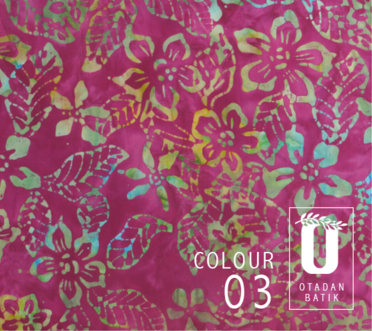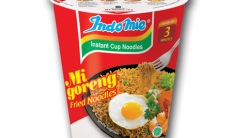Livemint, India
Maitreyee Handique
New Delhi: From producing fabric for international fashion names such as JC Penney Co., C&A and Benetton Group SpA, a small textile firm based in Noida, on the outskirts of New Delhi, has begun to turn out material that goes into the making of wound dressings, surgical masks and other hospital hygiene essentials.
The Rs340 crore Ginni Filaments Ltd exports most of the so-called non-woven fabric produced at a 12,000-tonne plant that opened in Gujarat in January. Last month, it also started making wound dressings with the material at a unit in Uttarakhand.
Poor demand and the absence of sufficient hygiene awareness means the company has to ship most of the new product line to the US and European markets, but chairman and managing director Shishir Jaipuria is betting that will change and local demand will eventually outpace production.
“India has a big potential because medical tourism is growing and a host of private doctors coming from overseas to work here need the best of hygienic textiles,” says Jaipuria, who invested Rs130 crore to set up the plant in Gujarat.
Textiles, as consumers know them, are used to make clothes, furnishings and kitchen rags. Jaipuria and other entrepreneurs are turning to so-called technical textiles that have applications in virtually every field—from protecting river banks to reinforcing bridges and roads to making face masks, baby diapers, tea bags and even cricket pitch covers.
It’s a growing and potentially lucrative market in India as foreign firms venture into the country and local companies try to get a foothold overseas, experts say.
Companies such as SRF Ltd and Neo Corp International Ltd, which recently diversified into manufacturing specialized fabric for use in civil engineering and agriculture, have acquired overseas firms in recent months.
The Rs1,615 crore SRF, which makes fabrics for conveyor belts and nylon tyre cord used for reinforcing wheels of heavy vehicles, bought Thai Baroda Industries Ltd of Thailand and Industrial Technical Textiles (Pty) Ltd, based in South Africa.
The company is now investing Rs270 crore in a polyester yarn unit to make high-performance reinforcement fabric for use in radial tyres, said Mukund Trivedi, a company spokesman.
Neo Corp. purchased UK-based Euro Plast Ltd for $2.5 million (Rs12 crore today), and is investing Rs65 crore to expand its plant in Madhya Pradesh, which started last year.
The Rs400 crore Garware-Wall Ropes Ltd, world’s third largest producer of polymer ropes, fish and port nets, is exploring agro textiles.
Finnish company Ahlstrom Corp. is spending €38 million (about Rs250 crore today) to set up a non-woven textile plant in a planned special economic zone in Mundra, Gujarat. The plant will produce 30 million sq. m of cloth a year, which will be used to make medical-related goods from doctors’ gowns to drapes
The buzz around technical textiles is growing as a slew of conferences are being organized by the government, industry chambers and research institutes. In September, the textile ministry organized a seminar on medical textiles in Coimbatore, already a significant hub of disposable medical goods.
On Friday, an event is scheduled in Mumbai focused on geo textiles, a branch of non-conventional fabrics required for civil engineering. In November, international experts on technical textiles are expected to gather at the Indian Institute of Technology (IIT), Delhi.
While India is the second largest textile economy after China at $52 billion, the technical textile industry never really took off because of a lack of innovation and research and development efforts and virtually no government-guided quality standards for non-woven fabrics.
If at all, India mostly makes low-end commodity products such as ropes, fishnets, tents and tarpaulins that is used for wedding receptions and political meetings. But this is slowly changing.
Bombay Textile Research Institute director A.N. Desai says the number of companies that turn up to check the quality of specialized textiles at the institute has risen to about 30-40 a month from less than 10 two years ago.
The domestic technical textile market, according to government data, was worth Rs29,580 crore last year—about one-tenth of the size of the conventional textile industry. But, that’s up from Rs19,130 crore in 2003-04, and on growing interest coupled with steady investment, the government expects the industry to grow at an annual pace of 14-15%.
Investment in non-conventional agro textiles, such as fabrics designed to retain soil moisture and protect crops, is negligible in the country. Now, multinationals such as the US-based EI Du Pont de Nemours and Co. are looking at several segments of agriculture, including providing material for vegetable mulching and fruit bunch cover.
Many say India still has a long way to go before these products become widely used and a majority of the companies expects the business to be paced by the government, which remains the bulk consumer of technical textiles for infrastructure from hospitals to highways.
Concerns over imports and little foreign direct investment flowing into the overall textile industry recently prompted the government to lay out a Rs14 crore plan to hard sell India as an investment destination, with a special focus on technical textiles. Foreign direct investment into the domestic textile industry represented a mere 0.76%, or $185 million, in 2014-2014, of a total inflow of $24.5 billion.
“India is already 20 years behind in technical textiles,“ says R. Alagirusamy, a professor in the textiles department at IIT Delhi. “If we don’t invest now, we will have to start depending on imports.”
There are no compiled statistics on the import of technical textiles, although they are critical for infrastructure and medical hygiene.
“Imports are taking place but it’s difficult to know how much because there are so many heads under which they come in,” says Shashi Singh, joint textile commissioner in the Textile Commissioner’s Office.
Neither are there any figures for how much investment has gone into the sector. “But we have been receiving good inquiries from entrepreneurs who are setting up plants,” she adds.
The government plans to spend Rs11 crore to open four centres which will be used for training and quality checks for technical textiles.
“A lot of work needs to be done to demonstrate its value propositions,” says Vivek Sharma, business manager at the non-woven division of DuPont’s India arm, adding that India needs to emulate Asian nations such as Taiwan, South Korea and Japan. “These governments (there) have played a significant role by offering between 50% and 70% subsidy to opt for using such textiles,” he says.
At present, the Indian government provides a 10% subsidy.
Bureaucratic delays rankle Ginni Filaments’ Jaipuria. The company set up its plant in Gujarat hoping that the government would release much-delayed quality specifications for non-woven fabrics in time for it to supply to the local market.
After talks of nearly two years, the standards are still not in place. “While technology used for woven disposal products here are outdated and its quality is in question, we cannot supply to government hospitals because quality standards are still not ready,” he said.
Graphics by Paras Jain / Mint





